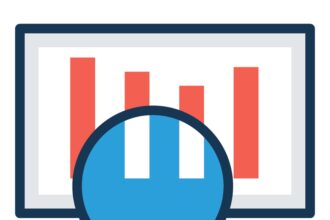As true today as it was 50 years ago?
Time capsules can be interesting. They can also be humbling. More on that in a moment.
As true today as it was 50 years ago?
Time capsules can be interesting. They can also be humbling. More on that in a moment.
 When we hear time capsule, most of us think of a dented iron box filled with photos, knick-knacks and documents buried under the cornerstone of the courthouse in a Midwestern hamlet.
When we hear time capsule, most of us think of a dented iron box filled with photos, knick-knacks and documents buried under the cornerstone of the courthouse in a Midwestern hamlet.
Those doing the burying often specify the amount of time the capsule is to remain in the ground. In some cases, the timespan must remain undefined. For example, four well-known time capsules are “buried” in space. The two Pioneer Plaques and the two Voyager Golden Records were attached to spacecraft for the benefit of music-loving space-travelers in the distant future. Will they prefer Chuck Berry to Mozart? Inquiring minds want to know.
A fifth space-bound time capsule, the KEO satellite, to be launched circa 2016, will carry individual messages from Earth’s inhabitants addressed to earthlings around the year 52,000, when it is due to return. Setting aside navigation and language issues, I suspect DVD player parts will be hard to come by then, even on Craigslist. Good luck with that.
There’s another type of “time capsule” that I want us to consider: the scholarly article from decades past. (And now we’ve reached the humbling part of the story).
In my experience many tech professionals, especially the executive ranks, consider themselves forward-thinkers, early adopters, one or two steps ahead, dispensers of wisdom. “If companies or consumers would just take our advice and buy our product or license our app, businesses would run better, people would be happier.” Or some variation on that theme.
Well, it’s indeed rather humbling to discover thinkers who, 50 years ago, understood with great clarity what we today believe is perceptive, advanced stuff. Especially when they really nail it!
If you follow my musings, you know that one of my most cherished tenets in BI is that data is dumb and people are smart. It’s only through the consistent, rigorous application of human intellect that data can be transformed into better decision-making. Business Intelligence tools are the bridge…the bridge to understanding and then predicting. I considered this point of view modern and progressive, even a little ahead of its time.
I was perhaps even a little smug. Until I read something from 1964. Ouch!
McKinsey & Company has been publishing some “classics” recently, and what follows is an excerpt from a “trends” article by John Louth*.
The dominance of the customer
It is nearly a truism that the needs and wants of the consumer are the critical issues today in creating new products and services, and developing the accompanying plans to merchandise them at a profit. But this trend—the first on my list—is still in process of evolution.
The need to understand and anticipate future customers is bound to become even more essential than in the past, because the end users of almost every company’s products are shifting in makeup, location, and number at an ever-increasing rate.
The significance of this to senior marketing executives is twofold: First, they cannot—indeed, they must not—assume that yesterday’s customers will be available tomorrow. Second, they had better be certain that they have adequate sources of market information. Unless they can keep up with what is happening to their markets, the whole company’s selling effort may ultimately be directed at the wrong people with the wrong products and at the wrong time.
This is what a marketing vice president I know meant when he said, “My company’s sales output can’t be any better than my intelligence input.”
That final quote says it all. The (so I thought) modern Business Intelligence value proposition delivered brilliantly. Dramatic. Crisp. Logical. Timeless.
Thank you Mr. Louth and McKinsey for the time capsule. We carry on the work you started.
* John D. Louth was a principal in McKinsey’s San Francisco office and specialized in problems of organization, marketing, and sales management. This article, based on a presentation he made to a West Coast marketing-executives group in 1964, appeared in the autumn 1966 issue of McKinsey Quarterly. It was adapted for the Quarterly with permission from Dun’s Review, which had published an earlier version in April 1966.







